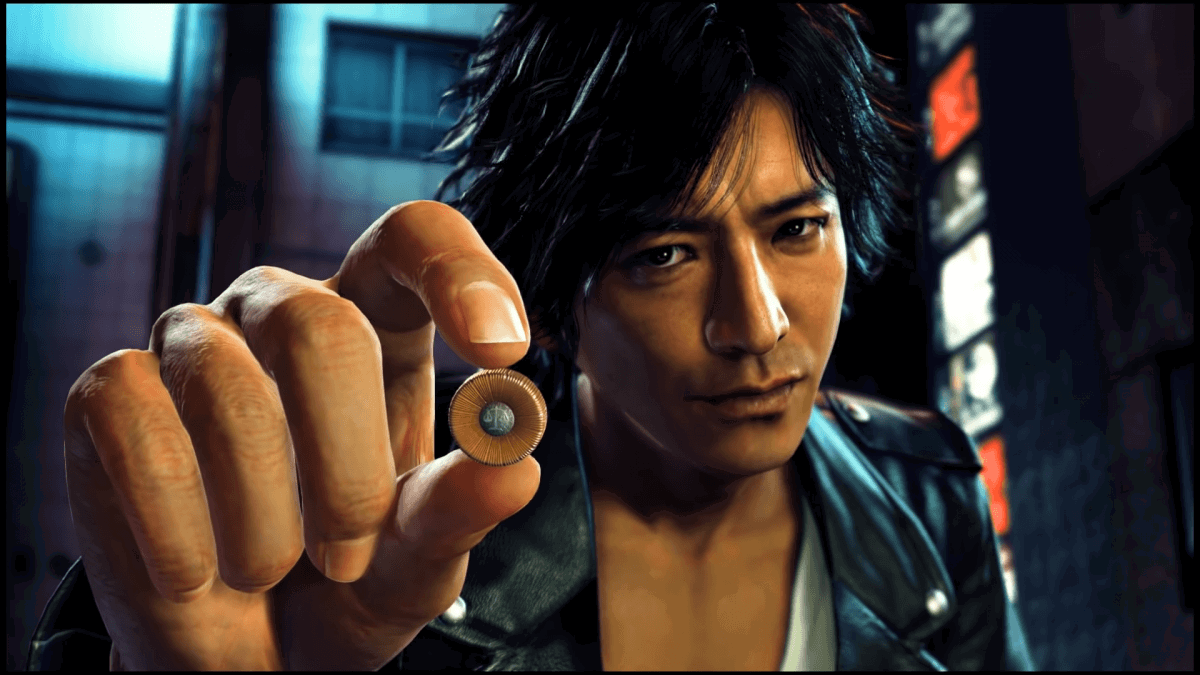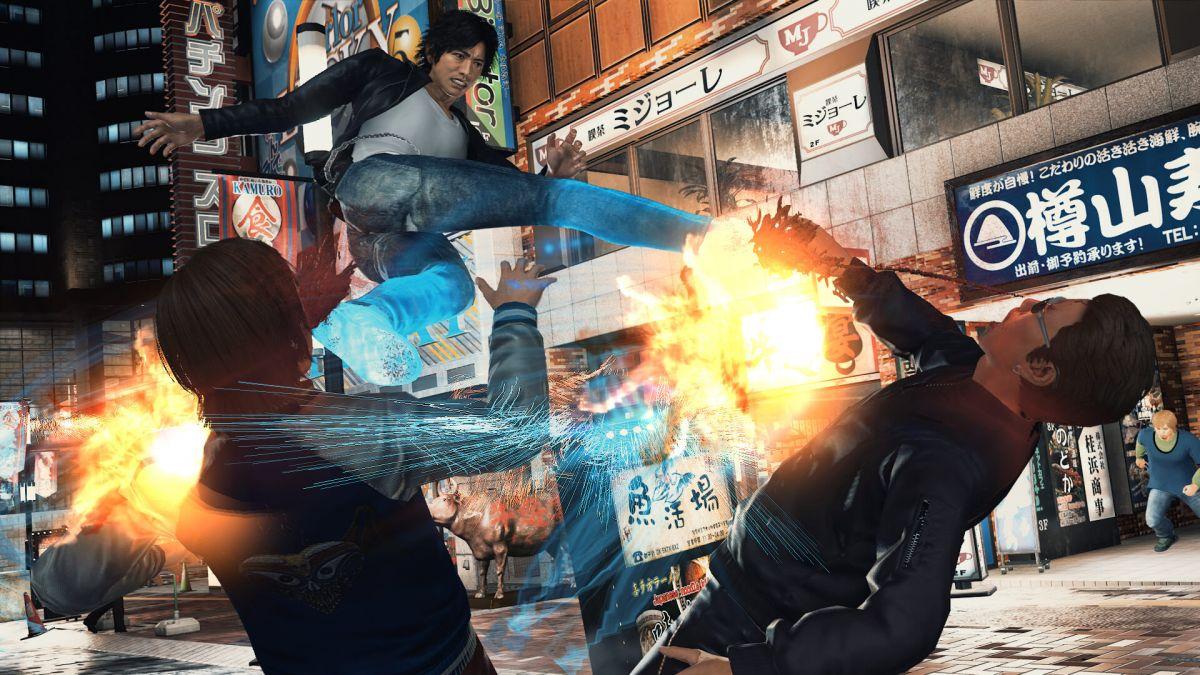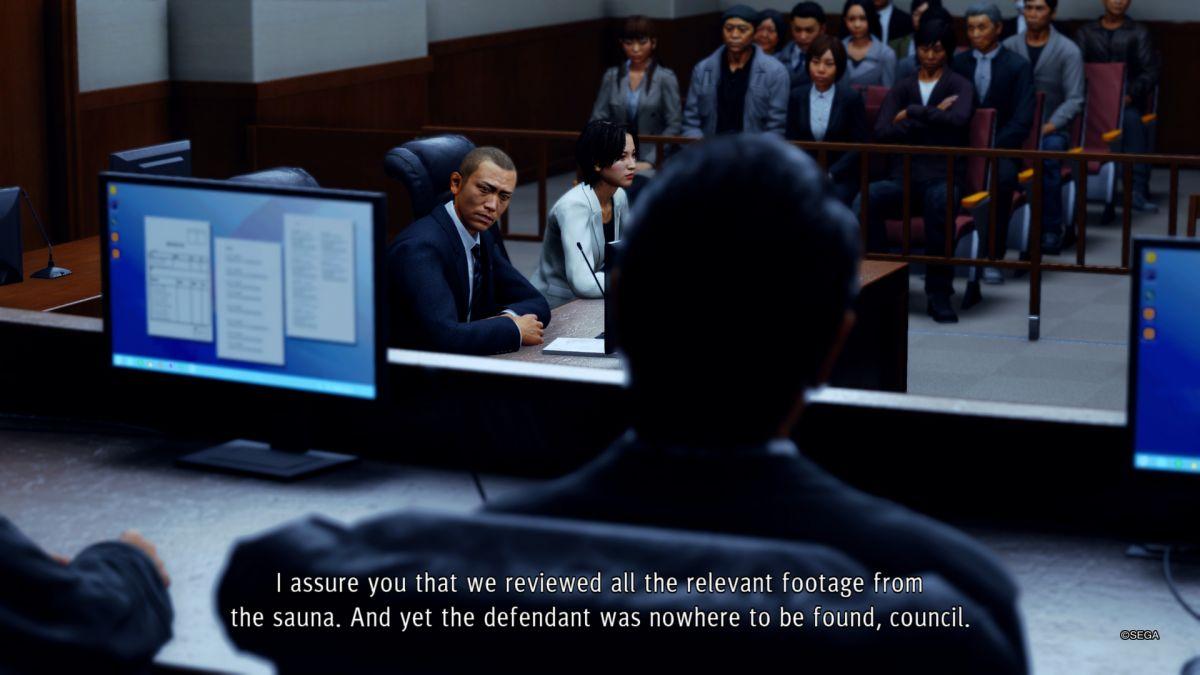Sega’s long-running Yakuza series is renowned for many things, including its masterful balance of tone and its wonderfully written narratives, but what draws most fans back to the crime-ridden streets of Kamurocho with each new release is the memorable cast of characters. From the stoic Kazuma Kiryu to the wild and crazy Goro Majima, Yakuza‘s personalities have kept the franchise fresh and interesting for six mainline games, an excellent prequel, and numerous spin-offs. Judgment is the newest of these spin-offs, but unlike the others, it ditches familiar faces entirely in favor of a brand new lineup. Can there be a Yakuza without the Dragon of Dojima? The first few hours of Judgment prove that Yakuza‘s gameplay systems and unique style of storytelling are able to stand on their own and flourish, even without pre-established characters.

In Judgment, you play as Takayuki Yagami, a yakuza-raised ex-lawyer currently working as a private investigator. Takayuki, or “Tak” as his friends call him, operates out of a small office in Kamurocho (the very same Kamurocho from the Yakuza series) alongside his friend Masaharu Kaito, an ex-yakuza, with the two of them working odd jobs collecting evidence and tailing people. The game opens with one of these odd jobs, and it serves as an excellent introduction to the twists Judgment places on the traditional Yakuza formula.
Judgment is a detective game through and through, and as such, you’ll be performing a lot of detective work. The prologue of the game sees you tailing a man to collect the large debt he owes your client. In order to accomplish this, you have to work your way through each of Judgment‘s new gameplay systems, beginning with tailing and first-person investigation, and later expanding to include lockpicking, piloting drones, and interrogation. Each of these new additions feels welcome, and none of them are particularly annoying, instead serving as a nice change of pace from the typical Yakuza fare as well as providing an opportunity to earn some much-appreciated experience points.
None of them feel out of place. If anything, they’re enhanced by Judgment‘s stylish presentation and sense of humor. Tailing suspects involves hiding behind signs and ducking into alleyways to avoid detection, and slipping out of sight is always accompanied by a slick animation that’s full of character. Interrogation sequences give you bonus experience if you ask the right questions in succession. Even something as basic as gathering evidence in first-person has its quirks. For example, every single evidence-gathering opportunity I came across in the game’s first chapter had a stray cat hidden somewhere in the environment (made obvious by overly-loud meowing), and these cats would reward me with experience upon their discovery. It’s little things like these that keep Judgment from feeling derivative of other detective games, giving the title its own unique identity.
Of course, it’s not revolutionary, either. Judgment is still a Yakuza spin-off, and it comes with all the typical trappings of a Yakuza game. Combat is the most obvious direct comparison (other than the game world), but combat has actually been greatly expanded upon in Judgment, much to my surprise. Judgment runs on the Dragon Engine, the same engine powering Yakuza 6 and Yakuza Kiwami 2, so I was expecting combat somewhere along those lines. I mostly got what I was expecting, but Judgment‘s Takayuki Yagami is not Kazuma Kiryu, and his fighting style definitely reflects that.
Tak’s moveset is much more acrobatic than Kiryu’s, relying on speed and quick thinking rather than raw power. He’ll spin, flip, and even jump off walls to defeat his enemies. The wall jump is actually a brand new mechanic. Sprinting at a wall will let you automatically bounce off of it to unleash a devastating blow to whoever’s nearby. While incredibly effective, this seemed highly situational in my time with Judgment, but one look at the game’s extensive upgrade list gave me hope that this ability (alongside Tak’s other moves) could be greatly augmented.
Heat actions make a return, but they’re called “EX Actions” this time around. A good number return from Yakuza 6, but there’s no shortage of new animations designed specifically for Tak. Extreme heat also makes a return with a new name: “EX Boost.” EX is Judgment‘s version of heat, and if the meter is full, you can unleash a powerful context-sensitive heat action or use EX Boost, which greatly improves attack speed and mitigates almost all damage, including mortal wounds. Mortal wounds are a feature entirely unique to Judgment. If Tak suffers a particularly powerful attack (clearly telegraphed by an enemy having a glowing aura), or if he is shot or stabbed, your health bar will be damaged irreparably. Healing items cannot recover damage sustained from a mortal wound, and you’ll have to take Tak to a doctor or use a special medical kit item to undo the damage.
Styles return for the first time since Yakuza 0 and Yakuza Kiwami, and this is the first time they’ve been available in a Dragon Engine game. Tak only has two styles, but they both feel fully fleshed out and completely viable, unlike the previous games where one or two styles were clearly the best of the bunch. “Crane” style is designed for taking on groups, packing an array of wide sweeps and kicks that hit multiple foes at once. “Tiger” style is meant for one on one encounters, dishing out high damage to single targets while being especially good at breaking guards. Both styles start off pretty standard, but the aforementioned upgrade list boasts a huge amount of options, and I was already seeing noticeable improvements at the end of Chapter 1.
Running on the Dragon Engine, Judgment comes complete with all the quality of life changes that the early Yakuza games so desperately needed. Walking in and out of stores and other buildings is totally seamless, and fights with patrolling thugs and hooligans break out in the streets without you ever seeing a loading screen. On top of these changes that come included with the Dragon Engine, Judgment brings a few tweaks of its own. Custom waypoints can be set on the map, making navigation a breeze. Sprinting is a toggle now, so you won’t need to keep the X button held as you dash throughout Kamurocho. Judgment removes as many barriers as it can between the player and the fun, and it results in a smooth, frustration-free experience.
The main draw of Judgment is its story, and the things I saw during the first chapter have me enthusiastically awaiting my next opportunity to play it. Tak is a likable, albeit slightly bland protagonist, but his personality started to develop toward the end of the first chapter as more of his troubled past was explored. His partner, Kaito, steals the show in each of his scenes with his bombastic mannerisms, and he’s incredibly effective comic relief. He’s a lovable sidekick, and I can’t wait to see more of him and Tak in action. The supporting cast didn’t receive nearly as much development as the main two, but as the plot started to manifest in the back half of the first chapter, I found myself slowly getting invested in everyone’s personal struggles, especially as the court drama kicked into high gear. Of course, I’ve only played the first chapter, so it’s hard to judge the narrative as a whole, but what I saw was gripping, despite a relatively slow start.
It wouldn’t be a Yakuza game without side stories, and Judgment is no exception. What I like about Judgment‘s method of rolling out side stories is how natural everything feels. I walked into a restaurant to get food to restore my health, and as I walked out, I was stopped by an “employee” asking me about my dining experience, and the whole endeavor quickly devolved into an episode of Undercover Boss. I walked into a store to pick up healing items, and the lady behind the counter needed my help to translate what a foreign customer was trying to tell her. These weren’t marked on my map or denoted with a special icon above the head of an NPC. Instead, I came across them effortlessly while trying to progress the main story. Side stories are alive and well in Judgment, and they’re better than ever.
As are the minigames, which no Yakuza game would be complete without. Sadly, the fan-favorite karaoke minigame is gone, but there is a wide array of other activities to partake in. Kamurocho is an exciting district, and it’s home to batting cages, multiple Club Sega arcades (featuring fully playable Virtua Fighter 5 and Puyo Puyo machines, as well as crane games), mahjong parlors, and even a VR arcade, which sadly was inaccessible this early in the story. Some of these minigame hubs are also “hangout spots,” which can sometimes provide you with side cases and missions.
What I’ve played of Judgment so far has me dying to play more. After a lengthy five-hour first chapter, Judgment‘s story is in full swing, and there are crimes to solve and killers to catch. Maybe I’ll run into the undercover boss again along the way, or maybe I’ll find some more cats. Wherever my future adventures in Kamurocho may take me, I can’t wait to see what else Judgment has up its sleeve. Yakuza fans will feel at home playing Judgment while also being able to appreciate its many changes to the formula, while newcomers can jump in blind, free of the baggage and lore that Yakuza games carry. Judgment is a solid title so far, and you can come back and check out my full review of the game later this month.
Judgment will be available exclusively on PlayStation 4 on June 25, 2019, and digital pre-orders get full access to the game four days earlier on June 21, 2019.
Preview Disclosure Statement: Judgment was provided to us by Sega for review purposes. For more information on how we review video games and other media/technology, please go review our Review Guideline/Scoring Policy for more info.






